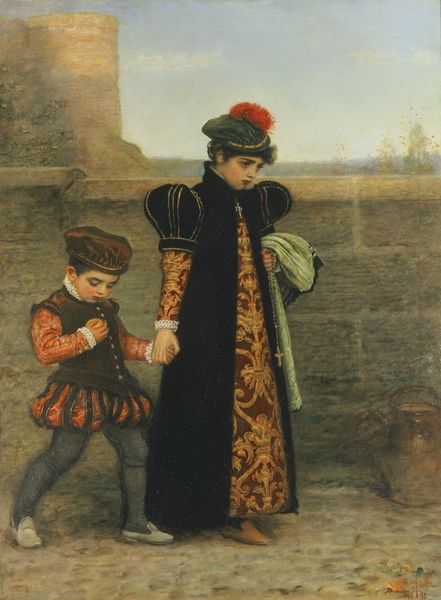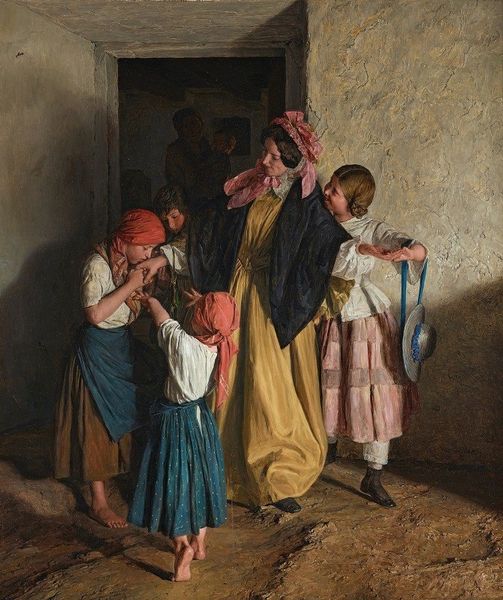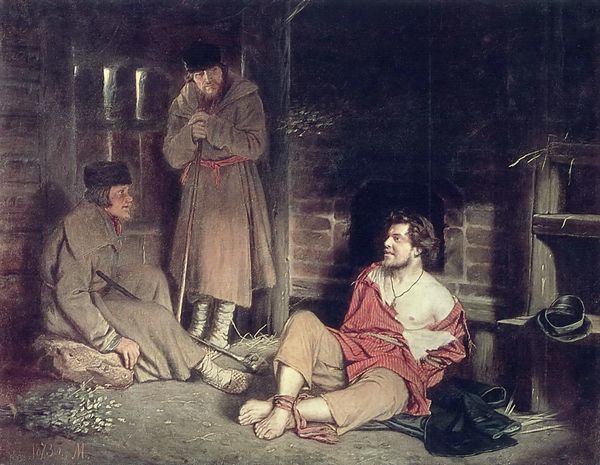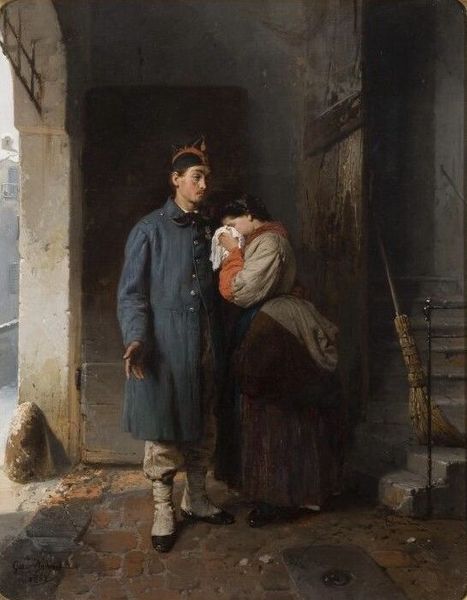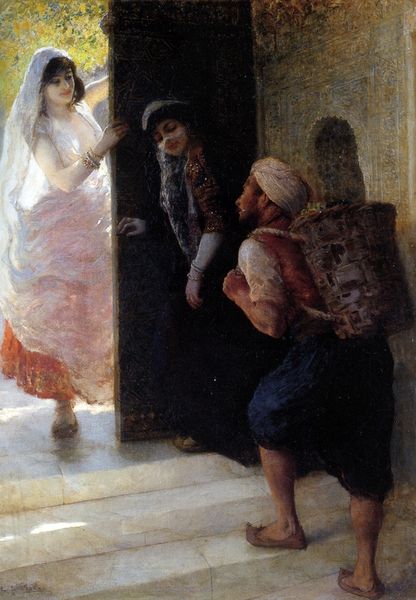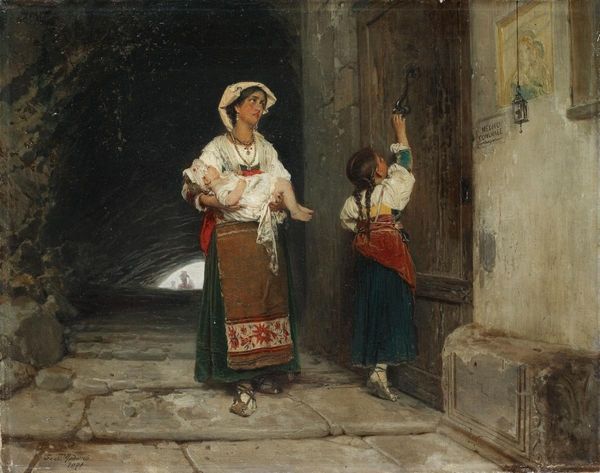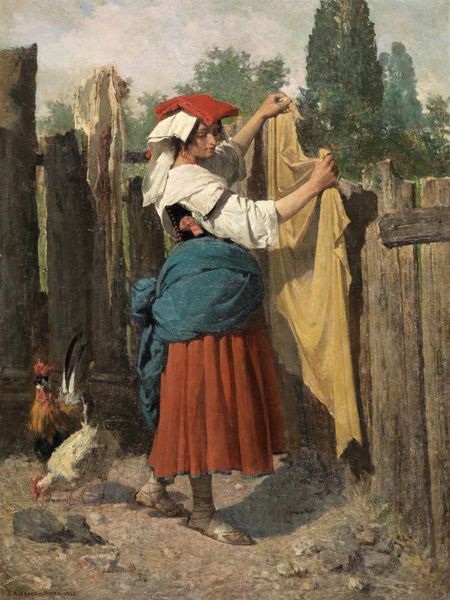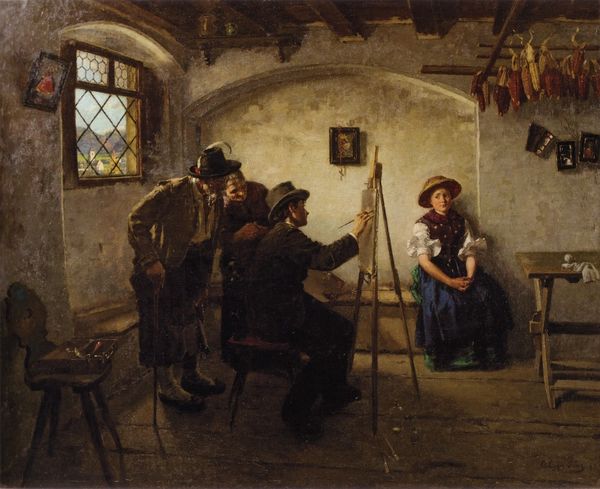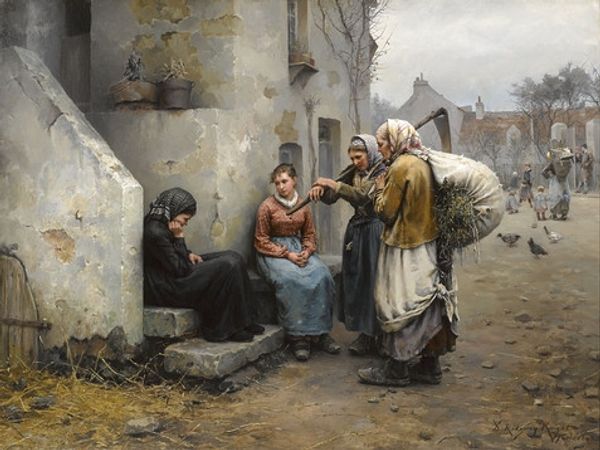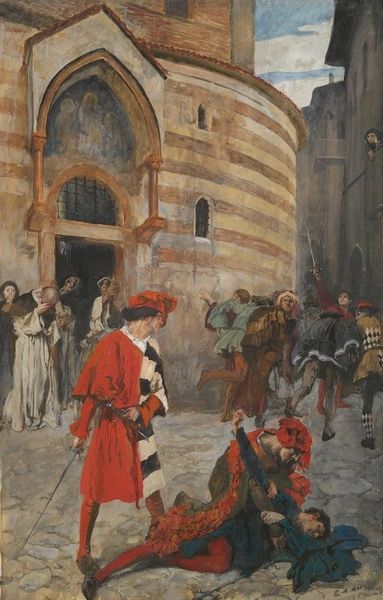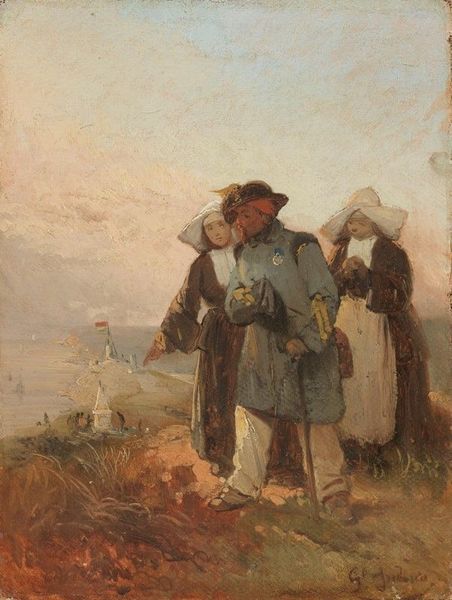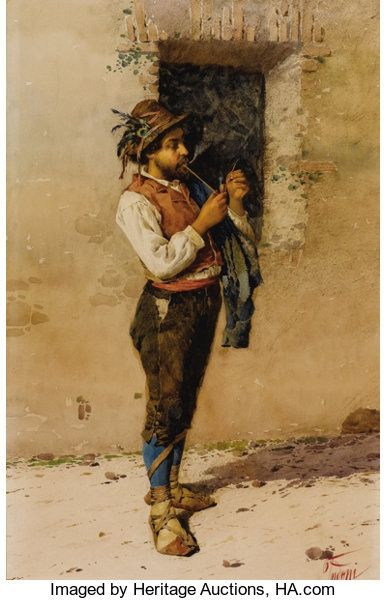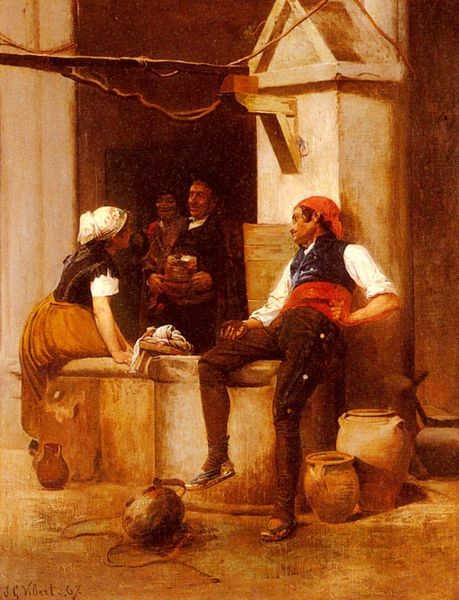
oil-paint
#
portrait
#
gouache
#
impressionism
#
oil-paint
#
figuration
#
oil painting
#
genre-painting
#
watercolor
Dimensions: 43 x 61 cm
Copyright: Public domain
Curator: The texture pulls me in immediately. This painting, titled "Repairing the Umbrella," captures such a transient, everyday moment, but it's rendered with a certain kind of permanence thanks to the artist, Noè Bordignon, and his handling of oil paint and, I think, gouache too. Editor: It feels like a painting preoccupied with the quiet resilience of ordinary folk—I notice immediately how Bordignon's piece is subtly drawing on those Italian traditions where family and community life offer support networks. It has such a hushed mood, yet the figures radiate a gentle stoicism. Curator: That's a great reading. It feels unpretentious in the best possible way—there's such tenderness in the figures. Do you notice how the artist's brushwork doesn't romanticize; rather, there’s an element of directness in how he paints weathered textures and windblown faces? You sense there's real sympathy here. Editor: Exactly. This painting strikes me as important because, even within its soft focus, it offers insight into how communities are structured. Who fixes things for whom, who relies on who? The umbrella, as a shared item needing repair, can function almost like a metaphor for collective maintenance and responsibility. Bordignon captures a very small vignette that actually reveals a broader societal dependency, don't you agree? Curator: Yes! Like life itself, there’s something both lovely and impermanent at work. What kind of conditions create intimacy among people? It gives the everyday a soft kind of dignity... almost melancholy. Editor: And the choice of clothing – these shawls and kerchiefs– speaks volumes. What roles and duties did these individuals play? I read something potentially gendered here, for example, the presence of women offering a crucial kind of care work. Perhaps even how traditional hierarchies shape experiences within a community. Bordignon provides that sensitive insight into otherwise unremarked social contracts. Curator: Ultimately, I think it shows the art is at its best when it whispers universal truths and not shouts. The painting’s genius, I think, lies in capturing the grace notes found in the ordinary. Editor: For me, it encourages consideration of the ways that societies organize aid in our everyday experiences. It prompts discussion of gender, communal structures and the value that needs placing on "repair" of things. It becomes an entryway to a far greater network of conversations and critical approaches to how to represent ordinary people, beautifully.
Comments
No comments
Be the first to comment and join the conversation on the ultimate creative platform.
